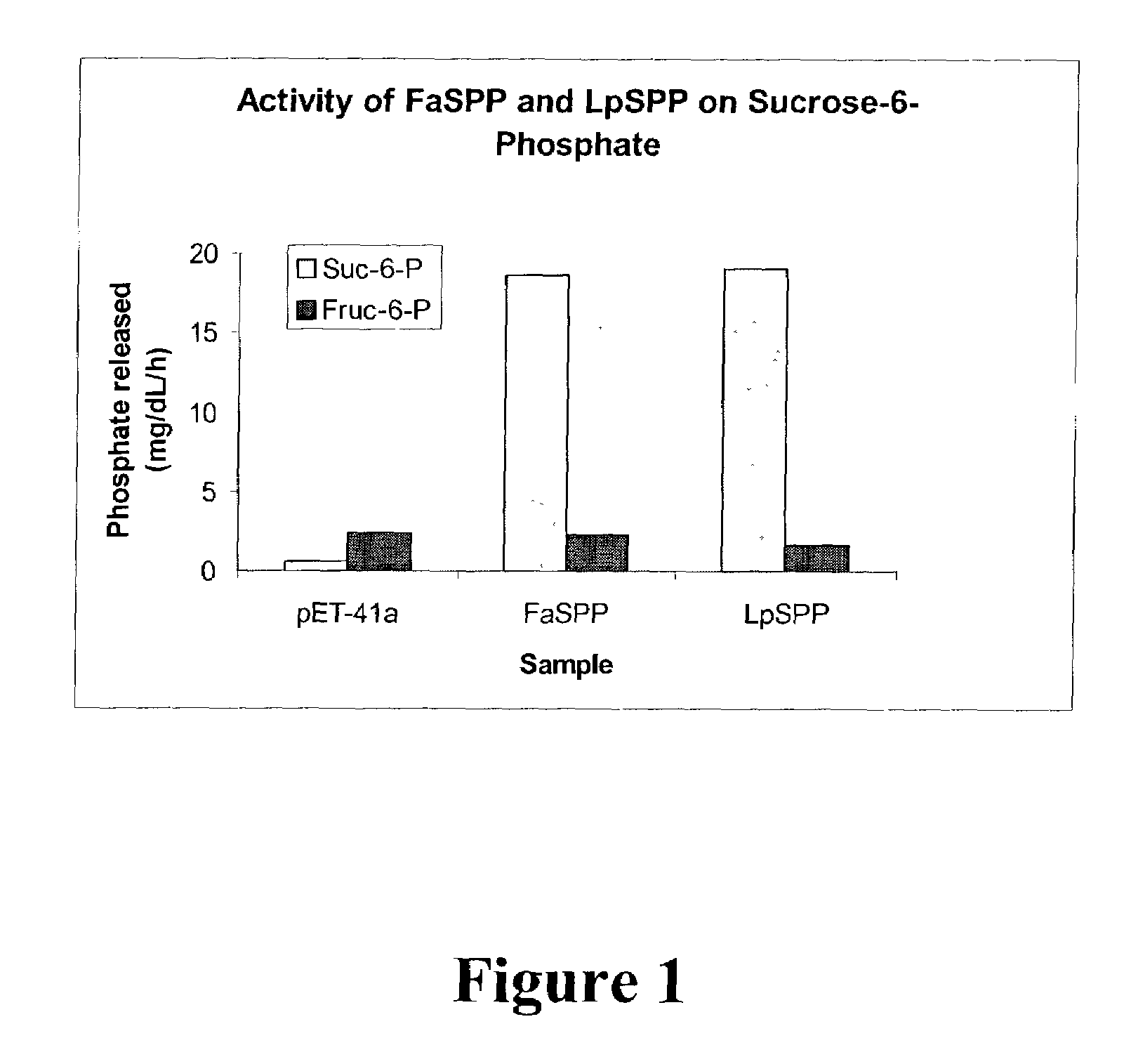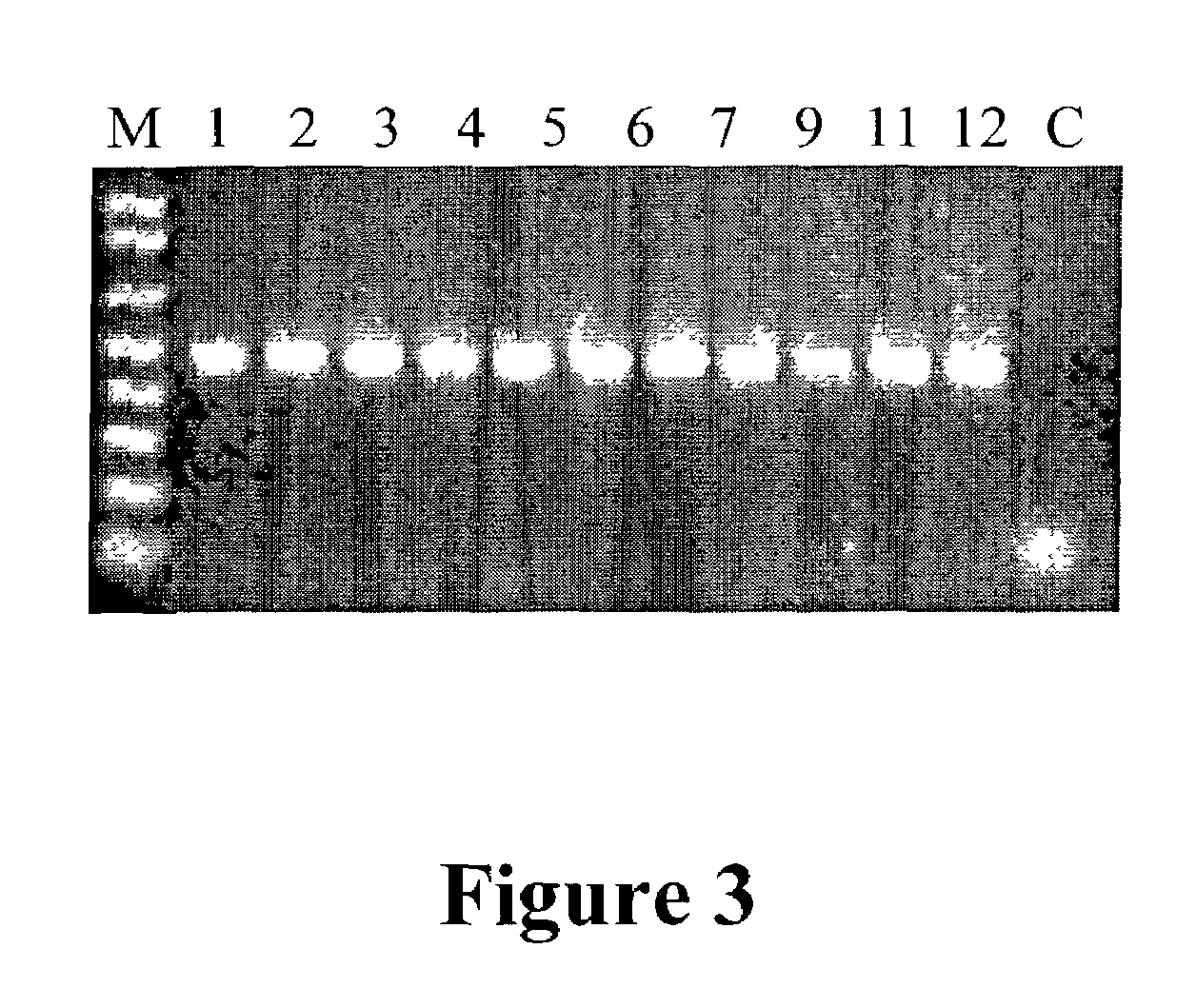Compositions isolated from forage grasses and methods for their use
a technology of forage grasses and polynucleotides, which is applied in the direction of angiosperms/flowering plants, plant cells, enzymes, etc., can solve the problems of reducing palatability and nutritive value, reducing the expression of many enzyme genes in a wide range of plant species, and reducing the number of nutritive valu
- Summary
- Abstract
- Description
- Claims
- Application Information
AI Technical Summary
Benefits of technology
Problems solved by technology
Method used
Image
Examples
example 1
Isolation of cDNA Sequences from L. Perenne and F. Arundinacea cDNA Libraries
[0096]L. perenne and F. arundinacea cDNA expression libraries were constructed and screened as follows. Tissue was collected from L. perenne and F. arundinacea during winter and spring, and snap-frozen in liquid nitrogen. The tissues collected include those obtained from leaf blades, leaf base, pseudostem, floral stems, inflorescences, roots and stem. Total RNA was isolated from each tissue type using TRIzol Reagent (BRL Life Technologies, Gaithersburg, Md.). mRNA from each tissue type was obtained using a Poly(A) Quik mRNA isolation kit (Stratagene, La Jolla, Calif.), according to the manufacturer's specifications. cDNA expression libraries were constructed from the purified mRNA by reverse transcriptase synthesis followed by insertion of the resulting cDNA in Lambda ZAP using a ZAP Express cDNA Synthesis Kit (Stratagene, La Jolla, Calif.), according to the manufacturer's protocol. T he resulting cDNA clon...
example 2
Use of Sucrose Phosphate Phosphatase to Dephosphorylate Sucrose-6-Phosphate
[0107]The F. arundinacea and L. perenne FaSPP and LpSPP genes (SEQ ID NO: 7 and 8, respectively) share amino acid sequence identity with sucrose-6-phosphate phosphatase genes from other plant species (Lunn et al., Proc. Natl. Acad. Sci. USA 97:12914–12919, 2000). These genes were amplified by PCR using the primers given in SEQ ID NO: 191 and 192 to add an initiating methionine, and then cloned into the pET41a expression plasmid (Novagen, Madison, Wis.). These primers amplified nucleotides 263–1531 and 280–1548 for FaSPP and LpSPP, respectively. The resulting plasmids were transformed into E. coli BL21 cells using standard protocols, and protein expression was induced using IPTG.
[0108]The soluble recombinant protein was assayed for its ability to specifically dephosphorylate sucrose-6-phosphate (Suc-6-P) but not fructose-6-phosphate (Fru-6-P) using the procedure described by Lunn et al. (ibid.). The release of...
example 3
Peroxidase Activity of Grass Enzymes Demonstrated by Their Ability to Oxidize 2,2′Azino-Bis.3-Ethylbenzylthiazoline-6-Sulfonic Acid (Abts)
[0109]A number of L. perenne or F. arundinacea genes (SEQ ID NO: 48–54) share amino acid identity with peroxidase genes from other plant species (Hiraga et al., Plant Cell Physiol. 42:462–468, 2001). The putative amino acid secretion signal sequence was identified by signalP analysis of the Lolium and Festuca sequences and homology to known peroxidase proteins. Primers were designed to amplify DNA representing the mature protein (minus signal sequence; Table 3.). These genes were amplified by PCR to add an initiating methionine and then cloned into the pET25b expression plasmid (Novagen, Madison, Wis.). The resulting plasmid was transformed into E. coli AD494 (DE3) pLysS cells using standard protocols, and protein expression was induced using IPTG.
[0110]
TABLE 3PrimersSEQ ID NOSEQ ID NOSEQDNA bpProteinDNAPROTGeneID NO:amplifiedcodons50112FaPER31931...
PUM
| Property | Measurement | Unit |
|---|---|---|
| digestibility | aaaaa | aaaaa |
| temperatures | aaaaa | aaaaa |
| temperatures | aaaaa | aaaaa |
Abstract
Description
Claims
Application Information
 Login to View More
Login to View More - R&D
- Intellectual Property
- Life Sciences
- Materials
- Tech Scout
- Unparalleled Data Quality
- Higher Quality Content
- 60% Fewer Hallucinations
Browse by: Latest US Patents, China's latest patents, Technical Efficacy Thesaurus, Application Domain, Technology Topic, Popular Technical Reports.
© 2025 PatSnap. All rights reserved.Legal|Privacy policy|Modern Slavery Act Transparency Statement|Sitemap|About US| Contact US: help@patsnap.com



